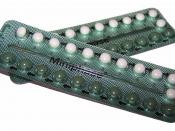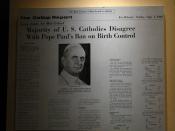ContraceptivesContraceptives being and or distributed to adolescents in public schools are an ongoing argument. People fall into one of the two categories: one favoring contraceptives, and the other, sexual abstinence. Every year about four in 100 women aged 15-19 have an abortion. Studies show that most of teen pregnancies are unwanted and not planned. Having a child at such a young age can lead to social problems and brings about the continuous cycle of poverty. A research panel of the National Academy of Sciences spent two years studying adolescent pregnancy and they decided contraceptives should be distributed to teenagers in public schools. Overall it is believed by many people that it is unrealistic to think that teens won't have sex, so we mind as well protect them by giving them the proper help that they need. The contraceptives will lower the rate of teen pregnancies and put an end to the tragic cycle of poverty.
(Adam Paul Weisman, v196 p15).
The camp of contraceptives think that since school plays such an important role in teens lives, they would make a good place to make these contraceptives available. The camp of abstinence believes that abstinence the correct way to be, and they clearly think that sex is wrong for teenagers. Although moral values are mostly taught at home by parents, it is thought that these same values should continue to be taught at school in a less demanding matter. Some parents are completely against these contraceptives but majority of parents agree that school is the next best place for their teenagers to learn about sex.
Statistics show that schools nearby the Hopkins-run birth control clinic reduced the pregnancy rate by 30 percent while schools without birth control reached 58 percent. These birth control clinics reduced the unintended pregnancies, and they also...


